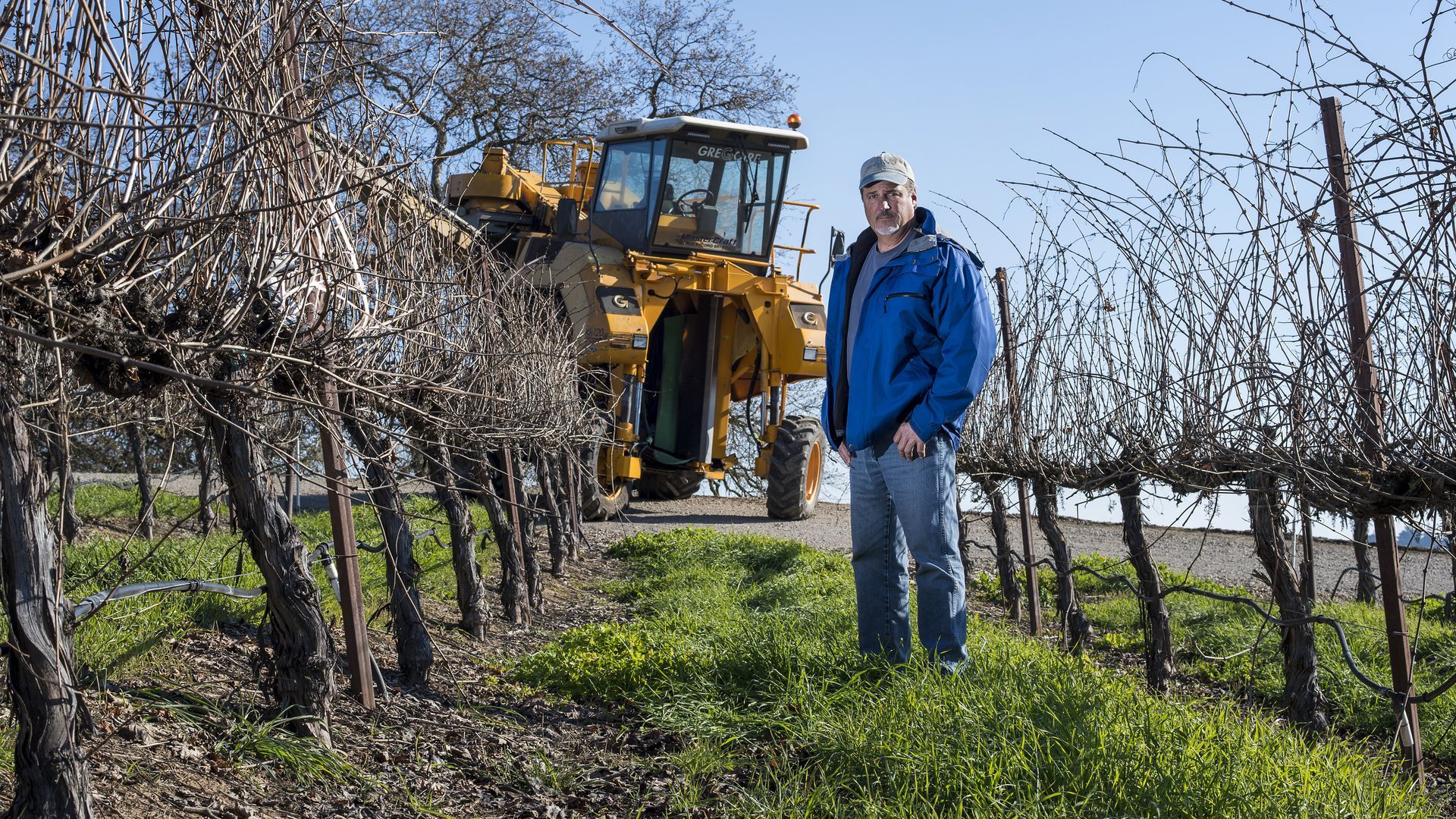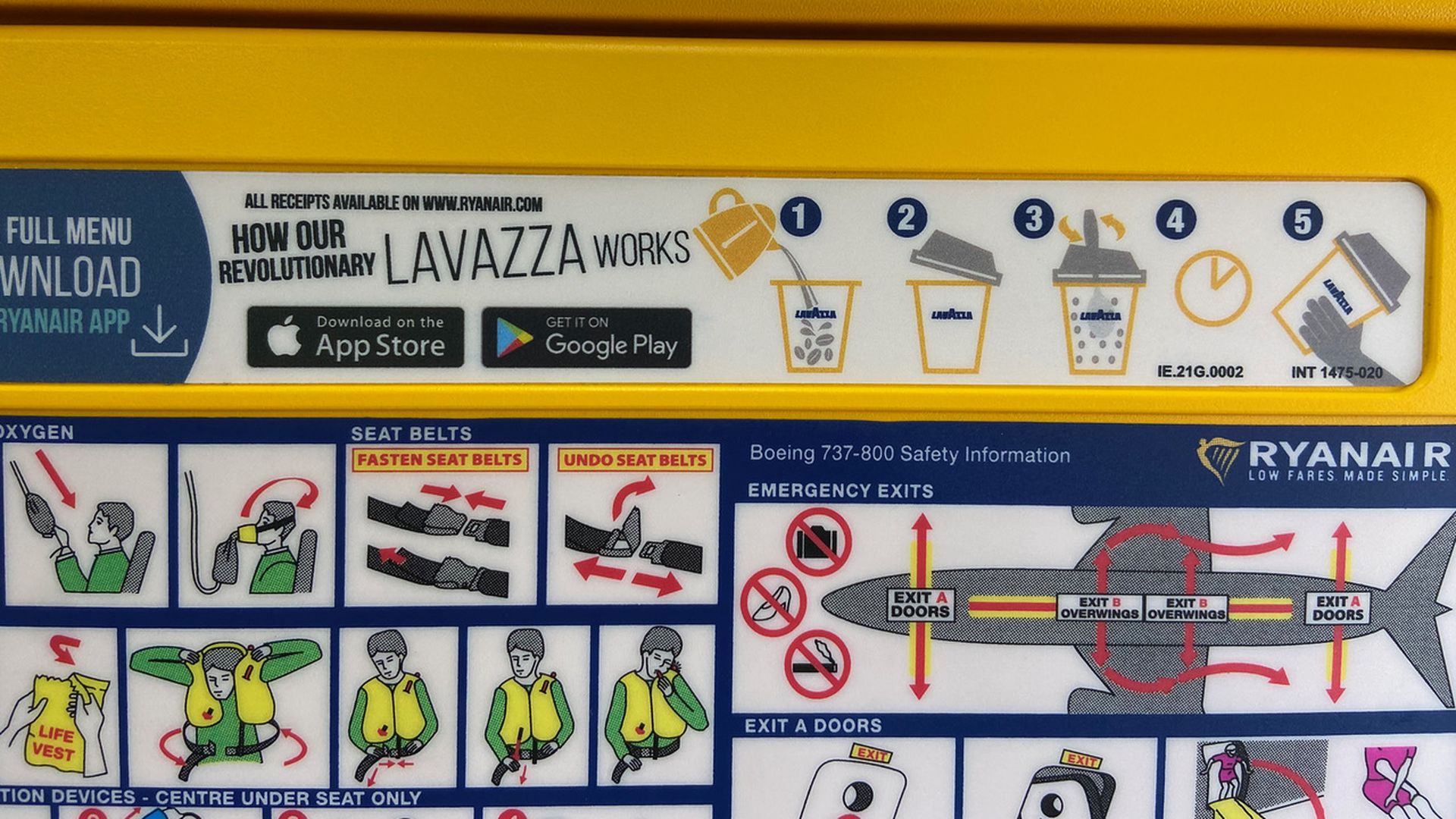| | | | | | | Presented By General Motors | | | | Axios What's Next | | By Jennifer A. Kingson, Joann Muller and Erica Pandey ·Oct 07, 2021 | | Our own Joann Muller spent Wednesday at GM's investor day, learning about our hands-free driving future — and preparing the dispatch below for you! - Today's reader photo comes from Kathleen Mulcahy of Sag Harbor, New York, who isn't the first to suggest that young people are baffled by once-ubiquitous technology.
- Another reader showed us a text message from an adult son who didn't know what a "busy signal" was.
- Send us your picture of What's Next!
Today's Smart Brevity count: 1,165 words ... 4.5 minutes. | | | | | | 1 big thing: GM will vastly expand hands-free driving by 2023 |  | | | Illustration: Rebecca Zisser/Axios | | | | Starting in 2023, owners of some premium General Motors vehicles will be able to push a button and navigate hands-free in 95% of driving situations — including highways, subdivisions and city streets, Joann writes. Why it matters: Ultra Cruise — the next-generation assisted-driving technology that GM introduced yesterday — is a giant step forward in the automaker's goal of "zero crashes, zero emissions and zero congestion." - GM says it will ultimately enable "door-to-door" hands-free driving on virtually any paved road in the U.S. and Canada.
The catch: Then as now, drivers will always have to pay attention — even when the car is doing the driving — in case they need to take back control. The big picture: Tesla has long promised door-to-door, hands-free trips with its AutoPilot technology and is currently rolling out a beta version of its so-called "full self-driving" (or FSD) system. - But the vision so far does not match reality. Tesla drivers must continually touch the steering wheel to register attentiveness, and unlike GM, there is no driver-monitoring system to track your gaze while you rest your hands in your lap.
What's happening: GM says Ultra Cruise will co-exist with its current driver-assistance system, Super Cruise, to make the technology accessible to customers at all price levels. - The more advanced Ultra Cruise will be reserved for premium vehicles like Cadillac, while Super Cruise — limited to hands-free highway driving — will be available on more mainstream vehicles like Chevrolet.
- When Ultra Cruise launches in 2023, it will cover more than 2 million miles of roads in the U.S. and Canada — 10 times as many as today's Super Cruise. Eventually, it will cover 3.4 million miles.
- What it can't handle: Pop-up construction or confusing roundabouts, for example, aren't in the repertoire.
- In those cases, the car will trigger a "non-urgent escalation" — that is, a light on the steering wheel will alert the driver to take control momentarily, and then the system will re-engage, according to Jason Ditman, chief engineer of Ultra Cruise.
- Touch sensors in the steering wheel will notify the car that the driver has regained control. If the driver doesn't respond, the car will issue a more urgent alert — the light bar will flash red — and eventually safely come to a stop if necessary.
Read the full story. |     | | | | | | 2. Grifters target Latinos |  Data: AARP; Chart: Axios Visuals Latinos in the U.S. are more affected than other groups by scammers pretending to be utility companies or young family members in danger, Marina E. Franco of Noticias Telemundo writes for Axios Latino. - 2 in 5 Latino adults say they've been victims of a scam in the past year, according to an AARP poll.
By the numbers: 23% of Latino adults in the U.S. say they are very concerned about falling prey to identity theft, compared to 17% of white non-Hispanics and 20% of Black non-Hispanics. - Latinos are the population group least likely to provide personal information for offers of a prize or gift, per the report, making them theoretically less susceptible to certain scams.
- Yet they report a lower rate of usage of protective software, like robocall blockers, antivirus or pop-up blockers, than white and Black non-Hispanics. That exposes Latinos more to internet- and phone call-based scams.
Context: Fraud spiked across almost all categories last year, according to the Federal Trade Commission. - Across all demographics, 1 in 5 adults reports having lost money to a scam and more than half say they have fallen victim more than once, per the AARP poll.
Share this story. |     | | | | | | 3. Labor shortage pushes winemakers to automation |  | | | Brad Goehring, operator of Goehring Vineyards in Lodi, California, uses robots to pick his grapes. Photo: David Paul Morris/Bloomberg via Getty Images | | | | A shortage of agriculture workers is forcing winemakers in the U.S. and Europe to turn to robots for their autumn grape harvest per a report in the Wall Street Journal, Joann writes. Why it matters: Pandemic-related travel restrictions have cut down on the availability of migrant workers, exacerbating an existing labor shortage in viticulture. - While crops like soybeans and corn are routinely harvested by machine, winemakers have been slower to make the switch for fear of damaging the grapes.
- In some wine-making regions of France, like Champagne, there are bans on machine harvest in favor of traditional hand-picking.
Yes, but: New research at UC Davis shows that not only can vineyards safely replace manual laborers by switching to machinery, they can also make better-tasting wine. - "The new system entails different trellises so the vine is higher up off the ground, so it has better flavor, it has better color, which winemakers desire," one researcher told CBS Sacramento.
What's happening: French manufacturer Pellenc told the Journal that demand for automated grape harvesters, which had been going up 5% to 10% a year, shot up about 20% this year. - The machines can be expensive — about $100,000 or more — but growers can recoup the cost over several seasons.
The bottom line: Labor shortages everywhere — including vineyards — are pushing producers toward automation. Share this story. |     | | | | | | A message from General Motors | | See our vision for the future in focus at GM Investor Event 2021 | | |  | | | | To realize our vision of a world with zero crashes, zero emissions and zero congestion, General Motors is scaling the power of our hardware and software to redefine experiences and services. This is how our platforms will change everything. | | | | | | 4. Ford brain research aims to keep drivers from zoning out |  | | | Ford brain-scanning research. Photo: Ford | | | | Ford is working with neuroscientists to develop brain-scanning technology that can more quickly detect when drivers are getting tired or distracted, Joann writes. Why it matters: It's crucial that drivers stay engaged behind the wheel, even as cars become more automated. But there's mounting evidence that people get complacent using driver-assistance features like Tesla Autopilot. - That's why federal safety regulators are investigating the systems.
- "The brain processes huge amounts of information when we are driving, but that may change as driver assistance technologies do some of the driving for us," said Stefan Wolter, research engineer at Ford of Europe.
Driving the news: Ford scientists in Europe are working with medical researchers at Uniklinik RWTH Aachen in Germany to map brain patterns to drivers' reactions. - Ford hopes that by identifying the brain responses that reveal lapses in concentration, it may be possible to match the scans to physical changes in heart rate or breathing, for example.
- A change in heart rate detected via wearable technology, for example, could then trigger an alert for the driver to pay attention.
Study participants complete a driving simulation while their brain activity is scanned by an MRI. A mirror allows them to see the simulation on a screen inside the MRI. - The scenario involves a three-lane highway at night on which a vehicle in the middle lane brakes suddenly and participants have to take over and move the car, using a handheld device.
- The MRI scans the brain before and during these actions, while researchers measure how quickly the participants react and if they make the right decision.
- They also monitor changes to heart rate, breathing rate and other physiological measures.
Share this story. |     | | | | | | 5. Reader photo of the day |  | | | The back seat of the row in front of our reader on her Ryanair flight. Photo courtesy of Kathleen Mulcahy. | | | | What's Next: Teaching young people things their elders take for granted Kathleen Mulcahy — who was bemused by the signage on the airplane seat in front of her — writes: "Not certain if this is 'What's Next' or 'What Was Is New Again'… it seems to be instructions on Ryanair on how to make instant coffee, but they think it's revolutionary! "It also could be sarcastic, but I have never known Ryanair to have a sense of humor." |     | | | | | | A message from General Motors | | See our vision for the future in focus at GM Investor Event 2021 | | |  | | | | To realize our vision of a world with zero crashes, zero emissions and zero congestion, General Motors is scaling the power of our hardware and software to redefine experiences and services. This is how our platforms will change everything. | | | | Does your airplane seatmate subscribe to Axios What's Next? Feel free to send them the signup link here (and remind them to keep the mask on). |  | | It'll help you deliver employee communications more effectively. | | | | | | Axios thanks our partners for supporting our newsletters. If you're interested in advertising, learn more here.
Sponsorship has no influence on editorial content. Axios, 3100 Clarendon Blvd, Suite 1300, Arlington VA 22201 | | | You received this email because you signed up for newsletters from Axios.
Change your preferences or unsubscribe here. | | | Was this email forwarded to you?
Sign up now to get Axios in your inbox. | | | | Follow Axios on social media:    | | | | | |









No comments:
Post a Comment